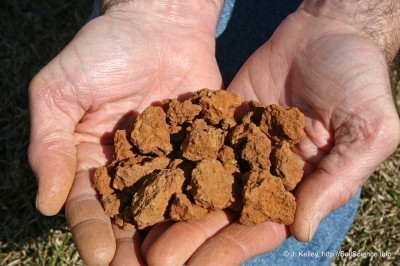






There are some patches of earth that seem to have been made for gardens. The soil is loamy, rich and dark and crumbles just right in the hands. This is the type of garden that gardeners with clay soil are insanely jealous of. If you live in an area that is plagued by clay soil, you know how that feels. You sigh when having to put a shovel to the ground because you know that if only your soil was better, that the task of digging would not be nearly so hard. Yet, it is possible to organically improve your clay soil. Keep reading to learn more.
How can you tell if your garden has clay heavy soil? One of the biggest indicators is if you take a handful of damp soil and squish it in your hands for a second, when you open your hands and that soil ball you just formed does not crumble, you most likely have clay heavy soil. Some other indicators are a greasy or slimy feel when the soil is wet, a dusty but hard appearance when the soil is dry or if you have drainage issues. All of these things are signs that your soil has too much clay.
Clay heavy soils can create several problems for a gardener. Clay soils have drainage problems that can literally drown your plants during times of heavy rains, and then when the weather is dry, the soil has a hard time retaining moisture and your plants will shrivel up.
But having clay heavy soil is not a reason to give up on your garden. With a little bit of work and a whole lot of compost, your garden soil can be the source of jealousy for your fellow gardeners as well.
One of the best things you can add to your clay soil is a compost of some kind. Whether the compost is well-rotted manure, leaf humus or many of the other options out there, you simply can not add too much to your clay soil.
Gypsum is another thing you can add to clay soil to help improve it. The gypsum helps to push the clay soil particles apart, making room for proper drainage and water retention.
Both compost and gypsum will also help attract worms to your clay soil, which then helps even further as the worms will burrow through the clay soil. The burrowing action of the worms will aerate your clay soil. As the worms burrow through the soil, they will also leave behind their castings too, which will help add nutrients to the soil.
As you can see, you can easily improve your clay soil with just a few steps. In no time at all, you will find that your garden will have the kind of soil that you only use to dream of.
Copyright © www.100flowers.win Botanic Garden All Rights Reserved